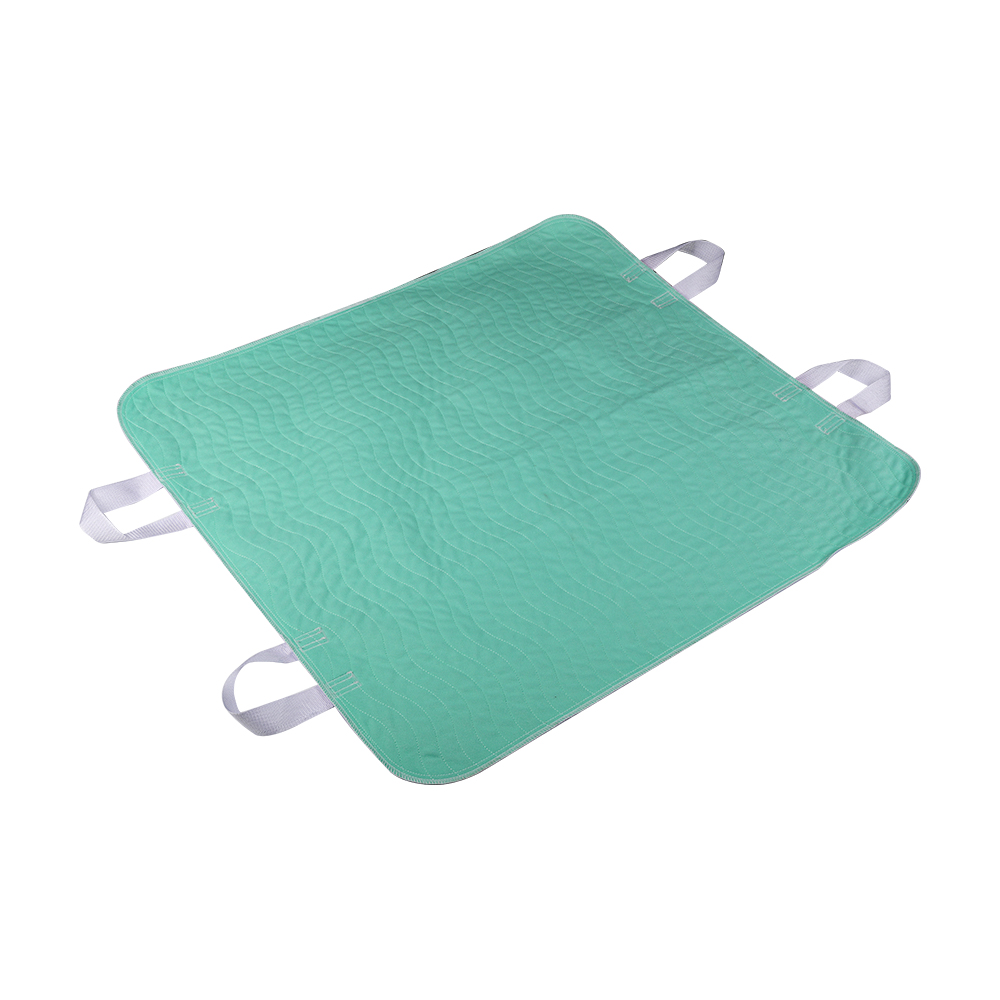The structural features of washable bed pads play a crucial role in their ability to distribute and contain moisture effectively. These features determine how efficiently the pad can absorb, spread, and retain liquid while minimizing the risk of leakage and discomfort. Here’s a breakdown of how various structural elements contribute to moisture management:
Absorbent Core Design
Layered Construction: Washable bed pads often feature a multi-layered construction, with an absorbent core sandwiched between top and bottom layers. The design typically includes materials such as cotton, polyester, or specialized fabrics with high absorbency rates.
Absorbency Capacity: The absorbent core's thickness, density, and composition determine its capacity to absorb moisture. A thicker core with a higher density can hold more liquid, reducing the frequency of changes and providing longer-lasting protection.
Wicking Properties: Some washable bed pads incorporate materials with capillary action, such as microfiber or hydrophilic fibers, to facilitate the rapid transfer of moisture away from the surface, preventing pooling and promoting even distribution throughout the core.
Quilting or Stitching Patterns
Quilted Channels: Quilting or stitching patterns create channels within the bed pad's structure, allowing for the even distribution of liquid across the surface and into the absorbent core. This prevents localized saturation and ensures maximum utilization of the pad's absorbency capacity.
Diamond or Grid Patterns: Specific quilting patterns, such as diamond or grid designs, can enhance the pad's stability and prevent shifting of the absorbent core during use, maintaining its effectiveness in containing moisture and minimizing the risk of bunching or clumping.
Waterproof Barrier
Bottom Layer Material: The bottom layer of the washable bed pad often features a waterproof or water-resistant barrier to prevent liquid from seeping through to the underlying mattress or bedding. Common barrier materials include polyurethane, vinyl, or laminated fabrics.
Breathability: While maintaining waterproof integrity, the barrier material should also allow for sufficient airflow to prevent heat and moisture buildup, ensuring comfort and preventing skin irritation or maceration.
Edge Sealing and Reinforcement
Sealed Edges: Properly sealed edges prevent liquid from leaking out of the pad and onto surrounding surfaces. Seam sealing techniques, such as heat sealing or ultrasonic welding, create a secure barrier along the pad's perimeter, enhancing its containment capabilities.
Reinforced Borders: Some washable bed pads feature reinforced borders or edge guards to enhance durability and prevent fraying or deterioration over time, especially during repeated laundering and use.
Size and Coverage
Surface Area: The size and coverage area of the washable bed pad directly impact its effectiveness in containing moisture. Larger pads with ample coverage provide better protection against leaks and ensure that moisture is distributed evenly across the pad's surface.

Tuck-in Flaps: Some bed pads come with tuck-in flaps or wings that secure the pad in place under the mattress, preventing shifting or bunching during sleep and maintaining optimal positioning for maximum moisture containment.
Breathable Top Layer
Comfort Fabric: The top layer of the washable bed pad is often made from a soft, breathable fabric that enhances comfort and promotes airflow. This helps to regulate temperature and moisture levels, reducing the risk of skin irritation and maintaining overall skin health.
Moisture-wicking Properties: Certain top layer fabrics are designed to wick moisture away from the skin, keeping the surface dry and comfortable. Materials like cotton, bamboo, or moisture-wicking synthetics are commonly used for this purpose.
Maintenance and Laundering Considerations
Quick-Drying Materials: Washable bed pads made from materials with quick-drying properties facilitate faster moisture evaporation and turnaround time between uses, ensuring that the pad remains hygienic and ready for reuse.
Machine Washable: The structural features of washable bed pads should be compatible with machine washing and drying to maintain cleanliness and hygiene standards without compromising the pad's integrity or performance.
The structural features of washable bed pads, including the design of the absorbent core, quilting patterns, waterproof barriers, edge sealing, size, coverage, top layer fabric, and maintenance considerations, collectively contribute to their ability to distribute and contain moisture effectively. By optimizing these structural elements, washable bed pads can provide reliable protection against leaks, promote comfort and skin health, and offer long-lasting performance in various caregiving and incontinence management scenarios.

 English
English Deutsch
Deutsch









